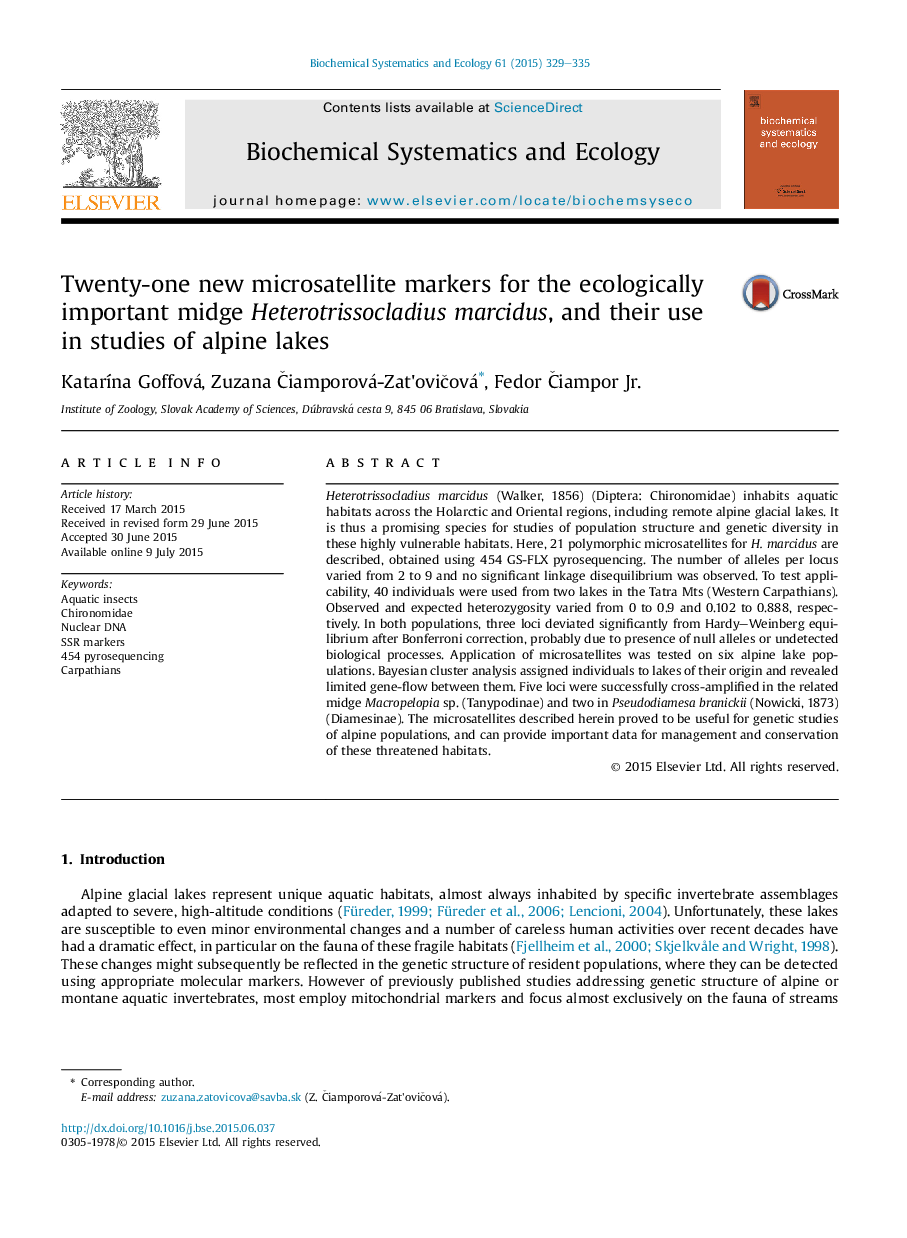| Article ID | Journal | Published Year | Pages | File Type |
|---|---|---|---|---|
| 1354220 | Biochemical Systematics and Ecology | 2015 | 7 Pages |
•21 polymorphic microsatellites developed for ecologically important freshwater midge Heterotrissocladius marcidus.•5 markers cross-amplified in two another chironomid species.•Application of markers successfully tested on alpine lake populations.
Heterotrissocladius marcidus (Walker, 1856) (Diptera: Chironomidae) inhabits aquatic habitats across the Holarctic and Oriental regions, including remote alpine glacial lakes. It is thus a promising species for studies of population structure and genetic diversity in these highly vulnerable habitats. Here, 21 polymorphic microsatellites for H. marcidus are described, obtained using 454 GS-FLX pyrosequencing. The number of alleles per locus varied from 2 to 9 and no significant linkage disequilibrium was observed. To test applicability, 40 individuals were used from two lakes in the Tatra Mts (Western Carpathians). Observed and expected heterozygosity varied from 0 to 0.9 and 0.102 to 0.888, respectively. In both populations, three loci deviated significantly from Hardy–Weinberg equilibrium after Bonferroni correction, probably due to presence of null alleles or undetected biological processes. Application of microsatellites was tested on six alpine lake populations. Bayesian cluster analysis assigned individuals to lakes of their origin and revealed limited gene-flow between them. Five loci were successfully cross-amplified in the related midge Macropelopia sp. (Tanypodinae) and two in Pseudodiamesa branickii (Nowicki, 1873) (Diamesinae). The microsatellites described herein proved to be useful for genetic studies of alpine populations, and can provide important data for management and conservation of these threatened habitats.
